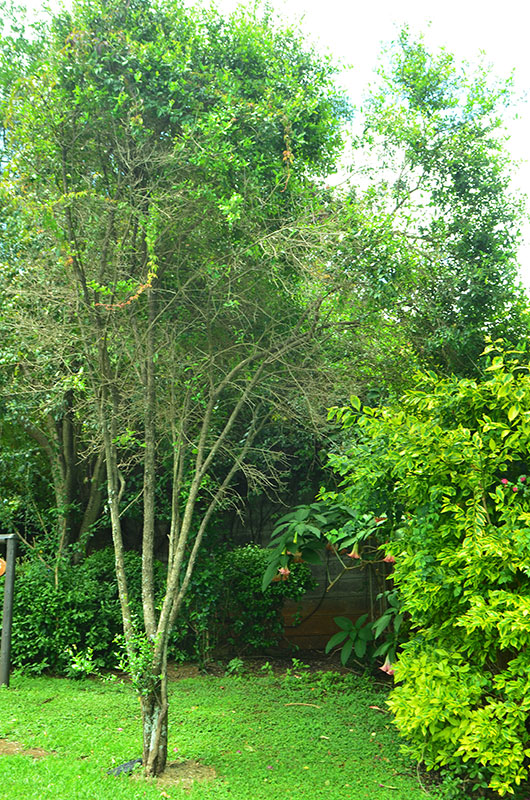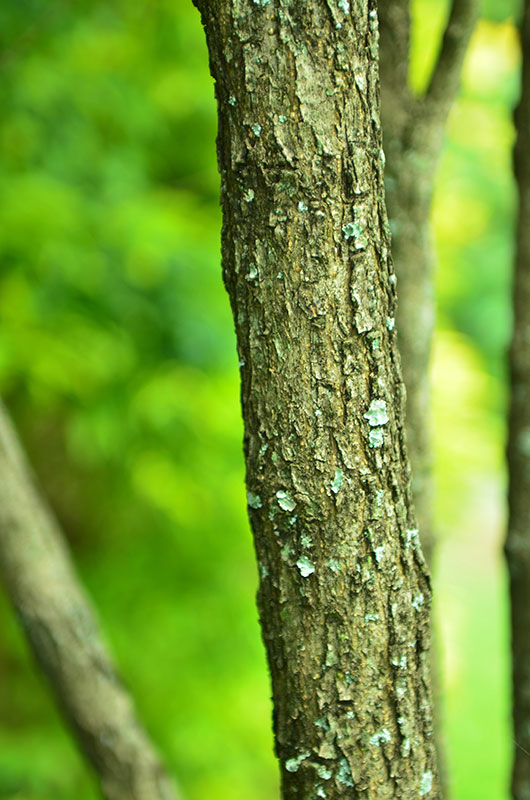
Tropicals, Woody > Olea > Olea europaea > Olea europaea subsp. cuspidata
Olea europaea
ssp. cuspidata
African Olive, Wild Olive, Iron Tree, Indian Olive
Origin: Africa and Asia and the Indian sub-continet: Egypt, Eritrea, Ethiopia, Somalia, Sudan, Kenya, Tanzania, Uganda, Burundi, Rwanda, Zaire, Angola, Malawi, Mozambique, Zambia, Zimbabwe, Botswana, Lesotho, Namibia, South Africa and Swaziland, Madagascar, the Mascarenes, Oman, Saudi Arabia, Yemen, Afghanistan, Iran, northern India, Nepal and Pakistan, western China. Introduced and naturalised in eastern and south-eastern Australia, New Zealand, Norfolk Island, Hawaii and the Mediterranean. It is considered a noxious weed in Australia and Norfolk Island.
Mike's
Opinion


"
Though the African Olive is a relatively beautiful tree, with its deep green leaves, fragrant white flowers and useful fruits, this plant is also becoming a weed. It outcompetes native plants in Australia and Hawaii and has even been declared a noxious weed in eastern Australia. With proper management however, this plant can become a lovely accent to any garden.
Michael Pascoe, NDP., ODH., CLT., MSc. (Plant Conservation)
"
| Family |
| Oleaceae |
| Genus |
| Olea |
| Species |
| europaea |
| Category |
| Tropicals, Woody |
| Type |
| Tree (evergreen), Shrub (evergreen) |
| Subspecies |
| cuspidata |
| USDA Hardiness Zone |
| 8 - 10 |
| Canadian Hardiness Zone |
| 7a - 8a |
| RHS Hardiness Zone |
| H2 - H4 |
| Temperature (°C) |
| > -12 |
| Temperature (°F) |
| > 10 |
| Height |
| 5 - 18 m |
| Spread |
| 6 - 8 m |
Photographs
Description and Growing Information
Flowering Period
| General Description |
| A multi-branched evergreen olive species that can be trained as a tree or shrub. This plant has greyish smooth bark with a thin lanceolate to linear glossy green leaves with densely green or gold lepidotes. Fruit is thinly fleshed and tends towards a black colour when mature. Originally a native of South Africa, this species has found its way to Australia, Hawaii and most of the Mediterranean. In some places such as New South Wales, it is considered a weed; as such, it recently has been listed as a removal priority. |
| Landscape |
| This plant is widely used as an ornamental and shade tree in residential areas, as well as being used for a buffer or hedges along roadsides. |
| Cultivation |
| Prefers well-drained yet moist soil but can tolerate drought, rocky and poor soils, and most soil pH zones. Prefers a full sun growing environment and thus will not tolerate full shade. Can be used as a street tree for it will tolerate urban areas, often seen naturally growing along roadsides, pastures and disturbed areas. |
| Shape |
| Rounded or spreading medium sized tree or tall-shrub. |
| Growth |
| Medium |
| ID Characteristic |
| Greyish-brown bark on a multi-stemmed tree. Long, leathery leaves with green surfaces and silvery undersides. Flowers are small, fragrant, creamy-white and have four petals. |
| Pests |
| Susceptible to olive knot, mushroom rot, lesion nematode, verticillium wilt, southern blight and scale insects. Xylella a bacterial disease is a serious threat to many horticultures crops due to its virulence and wide range of species it can infect. It can infect more than 560 species with wide ranging symptoms including leaf scorch, yellowing and scorching, wilt, branch and twig dieback and plant death. These symptoms can be identical to other symptoms such as drought and weather stress. Infected plants show symptoms within a few years after planting. |
| Habitat |
| This species thrives in temperate, semi-arid locations such as grasslands and roadsides but can thrive in woodlands, rocky slopes and waterways. |
| Bark/Stem Description |
| The bark tends to be rather smooth and grey-brown on younger to mature trees. Bark on older trees can begin to flake. The trunk has a habit of becoming twisted. |
| Flower/Leaf Bud Description |
| Tiny and inconspicuous, the buds tend to be a pale yellow-brown, getting darker on older branches. The lateral buds are rounded, relatively tight to the branch with a slight apical point while the terminal bud tends to be slightly elongated. |
| Leaf Description |
| Leaves tend to be a glossy grey-green with silvery undersides, sometimes golden or brown. These thick, leathery leaves are narrow and laceolate and grow to about 2-8 cm long and 0.5-1.5 cm wide in a opposite, decussate arrangement. This subspecies has green or gold lepidote on the underside of the leaf. This can be a distinguishing feature. |
| Flower Description |
| 15-30 small, fragrant, creamy-white flowers grow in a pinnacle on the end of branches and in the leaf axils. These perfect, four petaled blooms emit a light, sweet smell and are pollinated by wind. |
| Fruit Description |
| Drupes are a green colour when immature, slowly turning black or brown when mature. The thinly-skinned fruit are a round-oval, to 1.5-3 cm long and 0.6-2 cm wide. These simple fruit contain a single seed 10-15 mm long. |
| Colour Description |
| The leaves maintain their colour throughout the seasons, though the underside has been known to change from a silvery to a gold-brown colour. Bark is usually a dull grey-green-brown, while the fruit is green when young and black-brown when mature. |
| Texture Description |
| Soft and leathery leaves with smooth bark and soft, rubbery fruit. |
| Notable Specimens |
| Ballarat Botanical Gardens, North Ballarat, Victoria, Australia. Australian National Botanic Gardens, Canberra, Australia. Nakuru National Park, Nakuru, Kenya. |
| Propagation |
| Easily propagated by seed and in areas where it has become a pest the seed is often spread by birds and other animals such as foxes. Asexual propagation is done by taking a root cutting 2-3 mm thick and 70-100 mm long from 6-7 month old plant. 20-40 µg of Indolebutyric acid (a hormone in the auxin family) is then applied which encourages callusing and rooting within about 5 weeks. This is the propagation method being used in regenerating threatened numbers of the plants in its native range. |
| Ethnobotanical Uses (Disclaimer) |
| Fruit, olive oil and fine wood. |
References
Pagad, S. (2010, 09 11). Olea europaea. Retrieved from Global Invasive Species Database: www.issg.org
C. Breton, A. B. (2013). The Mediterranean Genetic Code - Grapevine and Olive. Agricultural and Biological Sciences.

